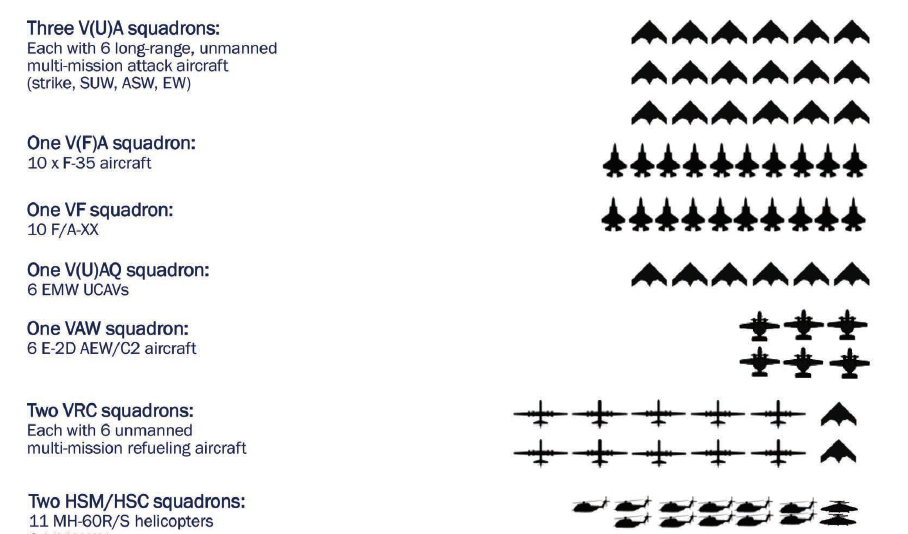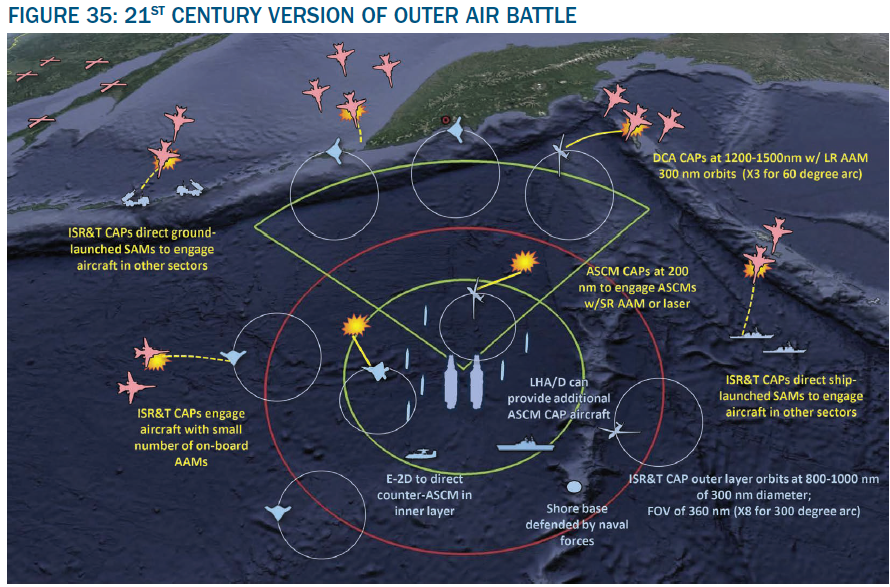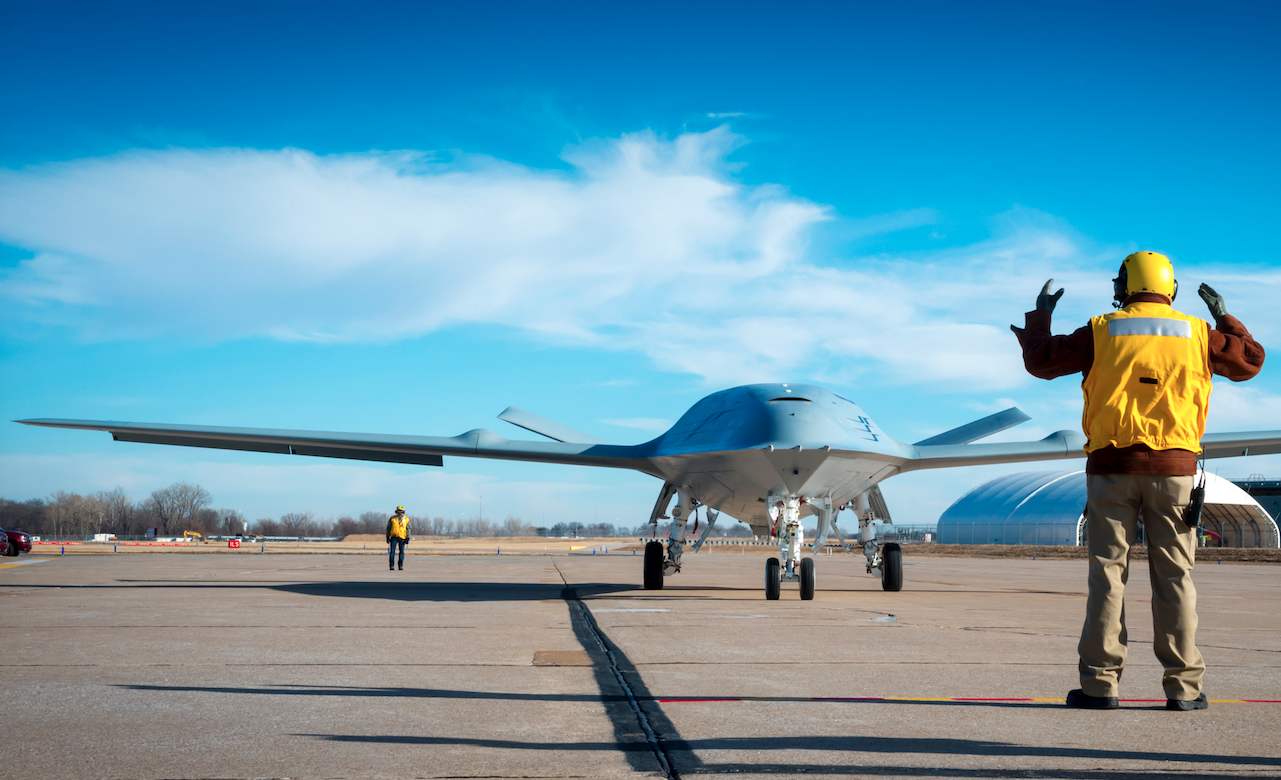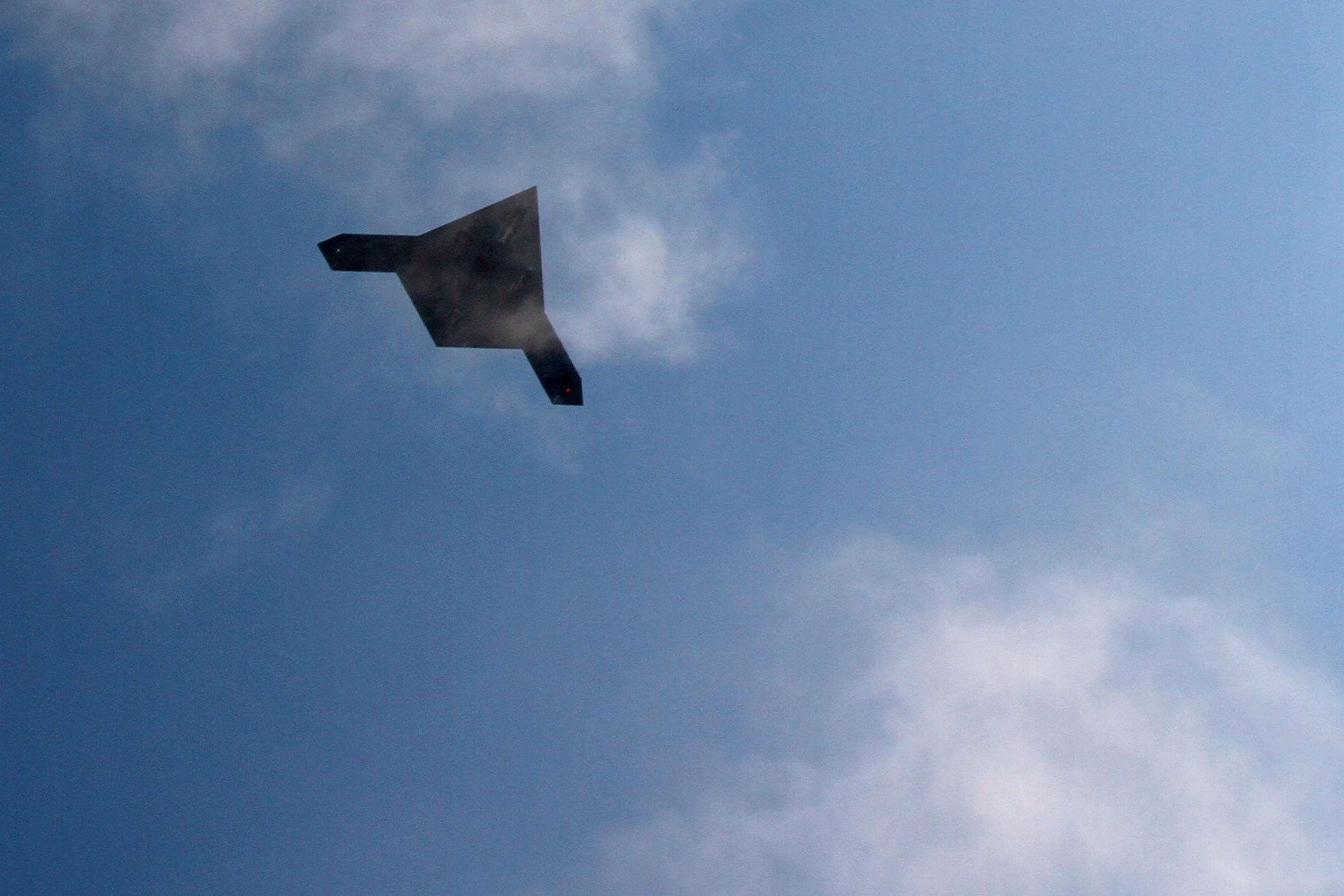X-47B Salty Dog 501 flies over USS Theodore Roosevelt on Aug. 17, 2014. US Naval Institute Photo
WASHINGTON, D.C. — To keep U.S. carriers relevant into the 21st century, the Navy needs to restart development of a lethal unmanned aircraft to fly from carrier decks, according to a new study on the future of the carrier air wing.
The Navy’s current air wing is composed of aircraft that don’t have the effective combat radius required to fight a far-flung island campaign in the Western Pacific, concluded the Regaining the High Ground at Sea: Transforming the U.S. Navy’s Carrier Air Wing for Great Power Competition study from Center for Strategic and Budgetary Assessments. In order to keep the carrier safe from a growing range of guided-missile threats, a carrier might need to stay as far away as 1,000 nautical miles. That’s about 400 nautical miles more than the effective combat radius of the emerging F-35C Lighting II Joint Strike Fighter and 500 more than for the current crop of F/A-18E/F Super Hornets.
“The range (of current aircraft) is relatively short compared to other aircraft because we’ve had to make design compromises with those aircraft to allow them to operate with some speed and maneuverability; they had to trade off some of their range in the design to be able to do that,” the report’s lead author Bryan Clark said last month at a CSBA event.
“You have an air wing of aircraft that are relatively short range but relatively high payload, but that’s not necessarily well suited to these operations.”

CSBA notional airwing of 2040. CSBA Image
The answer to the stand-off distance problem, according to CSBA, is for the Navy to field as many as 30 high-end unmanned combat aerial vehicles (UCAV) to fly combat air patrols up to 1,000 nautical miles from a carrier.
The notional UCAV would have a payload at least as large as the manned fighters in the air wing and be geared to not only land strike missions but also anti-air operations. It would also serve as a sensor node for air and missile defense missions, read the report.
Clark also recommended that in addition to the high-end UCAV, the Navy should modify its planned MQ-25A Stingray unmanned refueling aircraft to include more capabilities.
“We recommend that the Navy continue with its refueling aircraft, which is currently the MQ-25A, but evolve that aircraft to become a more multi-mission capable aircraft, and taking a future UCAV and adapting that to have a refueling variant in the future,” Clark said.
Eventually, both the modified refueler and the UCAV would field other capabilities like electronic warfare suites and expanded sensors packages to provide information to the strike group and other aircraft.
In addition to the new UCAV, Clark’s report called for the Navy to develop a new manned fighter to take the place of the F/A-18E/F on the carrier that would have improved range to cope with the new distances required to be effective in the Western Pacific conflict.

CSBA Graphic
The air defense demands of the future might be better served by having a fighter aircraft, but more importantly, fighters might be necessary to support operations by either naval strike aircraft like UCAV or Air Force strike aircraft.
The call in Clark’s report for a UCAV mirrors internal Navy discussion in restarting a program for a high-end UAV, USNI News understands. The Navy’s quest for a stealthy and lethal carrier UAV was stalled by conflicts internally in the service and in the Office of the Secretary of Defense several years ago. Ultimately, a watered-down version of a lethal penetrator, Unmanned Carrier Launched Airborne Surveillance and Strike (UCLASS), was shelved in favor of the MQ-25A. Instead of a low-end surveillance mission, the MQ-25A was designed to alleviate the strain on manned fighters that have been conducting the refueling mission for the air wing.

Tests of Boeing’s MQ-25A Stingray prototype in St. Louis. Boeing Image
When asked by USNI News last month on future unmanned systems for carriers, the head of U.S. Naval Air Forces said he was focused on fielding the MQ-25A before pushing out to new capabilities for the air wing.
“Crawl, walk, run. Let’s get MQ-25 out in our air wings. Let’s learn from that and we’ll see how we evolve from that,” Vice Adm. DeWolfe Miller told USNI News.
“We’re having those conversations. When it will materialize into a future system or competition? I’m not seeing that right now in my man, train and equip [responsibilities]. Our job is to make sure that MQ-25A is successful, that we have the construct right, that we learn from it, and then we’ll go from there.”

